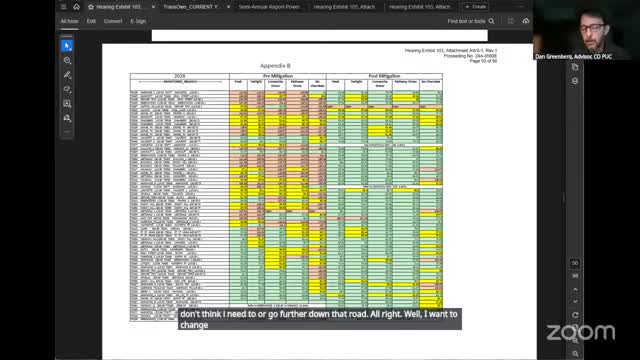Power Pathway Report affirms progress for segments 4 and 5 ahead of 2027 completion
April 23, 2025 | Public Utilities Commission, Governor's Boards and Commissions, Organizations, Executive, Colorado
Thanks to Scribe from Workplace AI , all articles about Colorado are free for you to enjoy throughout 2025!

This article was created by AI using a video recording of the meeting. It summarizes the key points discussed, but for full details and context, please refer to the video of the full meeting. Link to Full Meeting
The Power Pathway project, designed to facilitate the flow of renewable energy from remote generation sites to urban centers, is structured in five segments. The final two segments, which extend from Pueblo to the Denver Metro region, are projected to be completed by May 2027. However, concerns were raised about the implications of incomplete segments on energy flow and system overloads anticipated in 2026.
During the discussions, officials sought clarity on how the absence of power flowing through certain substations would affect the overall energy distribution and the potential for overloads in the system. It was noted that while segments four and five would not be operational until 2027, segment one is expected to be in service by 2026, allowing for some energy flow from earlier segments. This complexity highlights the interconnected nature of the project, where the timing of transmission and generation plays a crucial role in managing energy demands.
As representatives delved deeper into the technical aspects, they acknowledged that the stresses observed in the system were not solely attributable to the Power Pathway project. Instead, they pointed out that changes in generation patterns across the broader energy network were also contributing to these challenges. The conversation underscored the importance of a coordinated approach to energy management, particularly as the region transitions to a cleaner energy landscape.
The meeting concluded with a commitment to continue monitoring the project's progress and addressing the challenges that arise as the Power Pathway moves closer to completion. As Colorado navigates its energy future, the outcomes of this ambitious initiative will be pivotal in shaping the state's renewable energy capabilities and ensuring reliable power for its residents.
Converted from 24A-0560E Public Service Company - CPCN Denver Metro Transmission - 04.22.25 - HRA meeting on April 23, 2025
Link to Full Meeting
Comments
View full meeting
This article is based on a recent meeting—watch the full video and explore the complete transcript for deeper insights into the discussion.
View full meeting